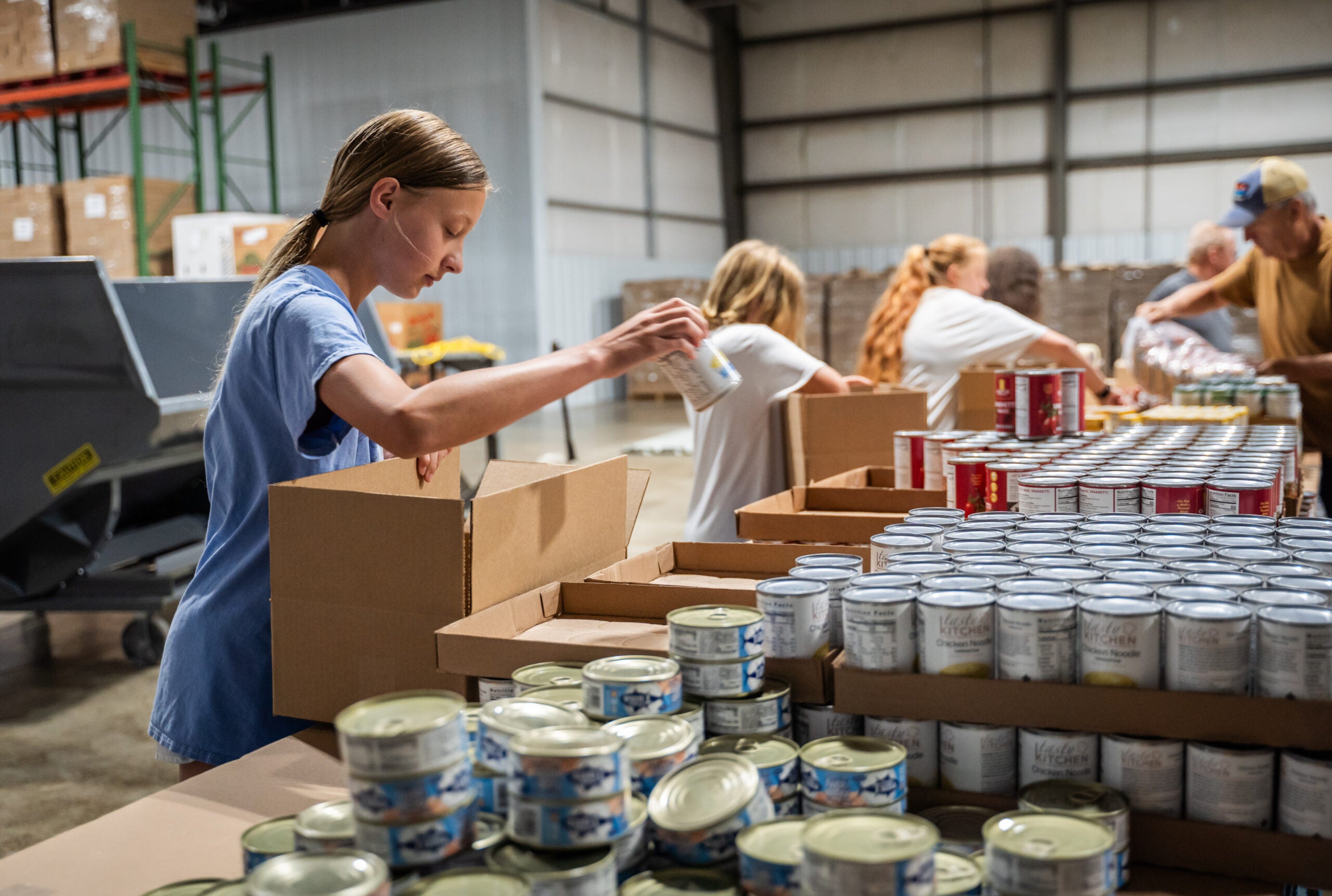When school ends for summer break, many families lose a key source of nutrition for their children – school meals. In South Carolina, where more than 197,000 children face food insecurity, summer can turn from a time of play and recharging to a time of hunger.
Harvest Hope Food Bank, South Carolina’s largest food bank, is addressing this challenge with rural non-congregate summer meals. By using their existing distribution network and community agencies, Harvest Hope is using a model that helps more children get access to healthy meals during the summer months.
In 2024, Harvest Hope expanded their summer meal service from just traditional summer feeding programs that require children to eat on-site at designated times and places, to non-congregate summer feeding. This new model focused on convenience and greater access, allowing families to pick up a full week’s worth of meals in one stop.
“Non-Congregate feeding sites can be a better approach,” said Erinn Rowe, CEO of Harvest Hope. While picking up a week’s worth of meals in one trip is worth the effort, many parents lack reliable transportation or the ability to bring their children to a site every day to eat on-site. In some cases, kids may not even have a safe way to get there on their own. “It’s a much easier way to help feed people in rural communities.”
The Harvest Hope team came up with a weekly box of kid-friendly, USDA-compliant meals that includes a mix of shelf-stable, refrigerated, and frozen options. Each meal is balanced, nutritious, and designed with limited storage space in mind.
What sets this program apart is how seamlessly it fits into what Harvest Hope already does. With three warehouses, a team of 80+ staff, over 200 daily volunteers, and the capacity to purchase food by the truckload, the organization didn’t need to reinvent the wheel.
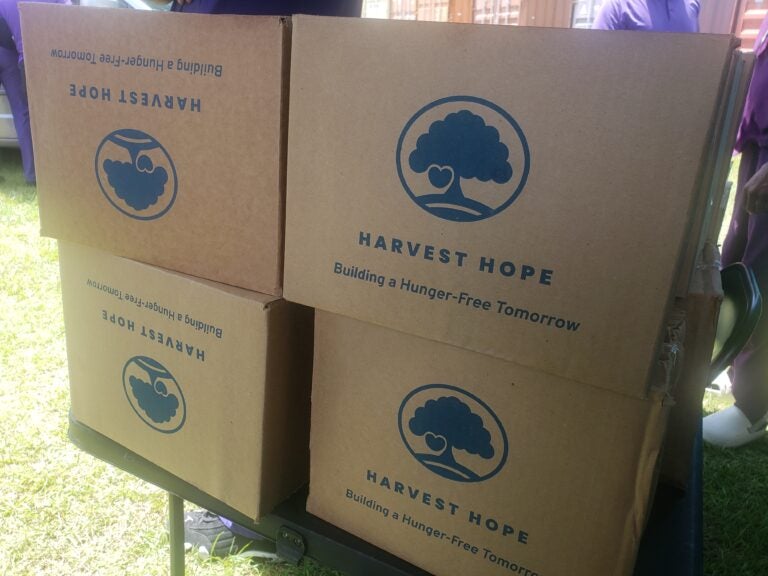
They simply added summer meal kits to their ongoing operations.
In its first year, the program served 1,850 children and distributed more than 6,000 boxes. In 2025, Harvest Hope plans to scale the program to reach up to 1,500 kids every week.
Rather than launching new feeding sites from scratch, Harvest Hope selected three non-congregate feeding sites across three counties from its existing network of over 400 partner agencies, including churches, schools, clinics, and nonprofits across 20 counties. These partners already serve their communities year-round, making them the ideal distribution points for the summer meal kits.
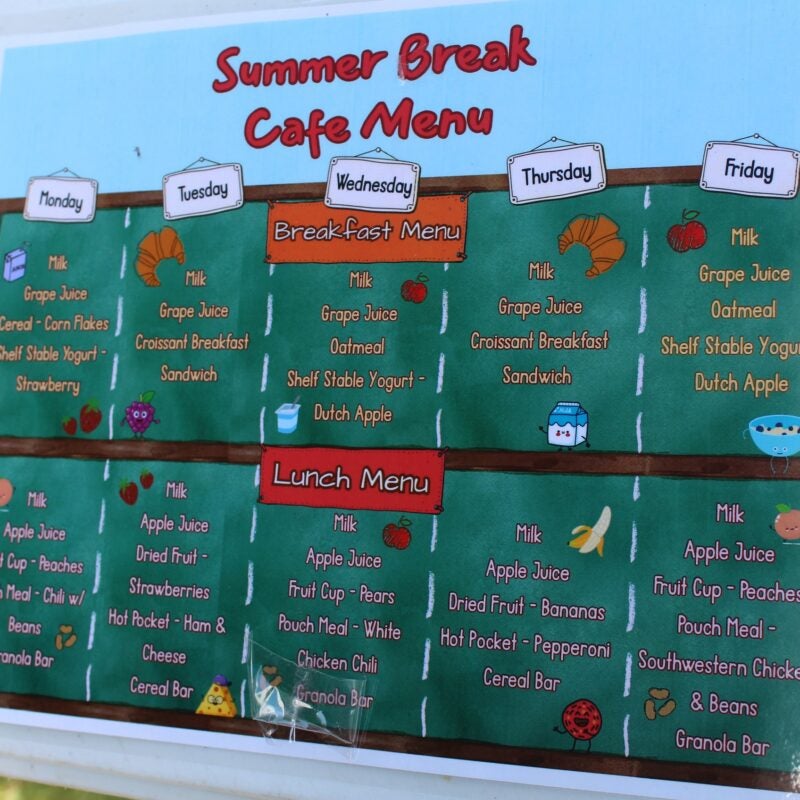
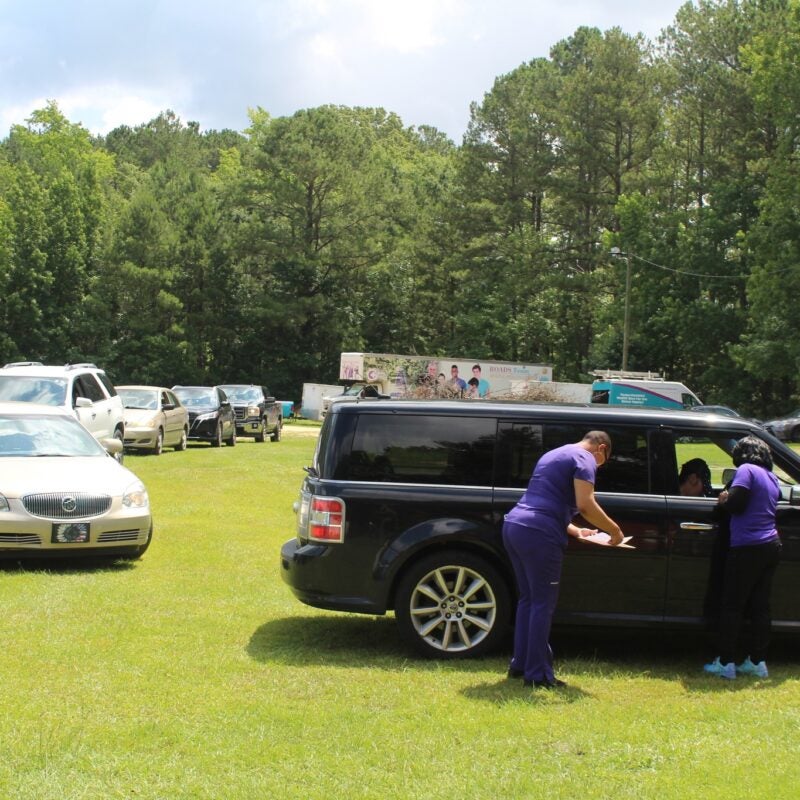
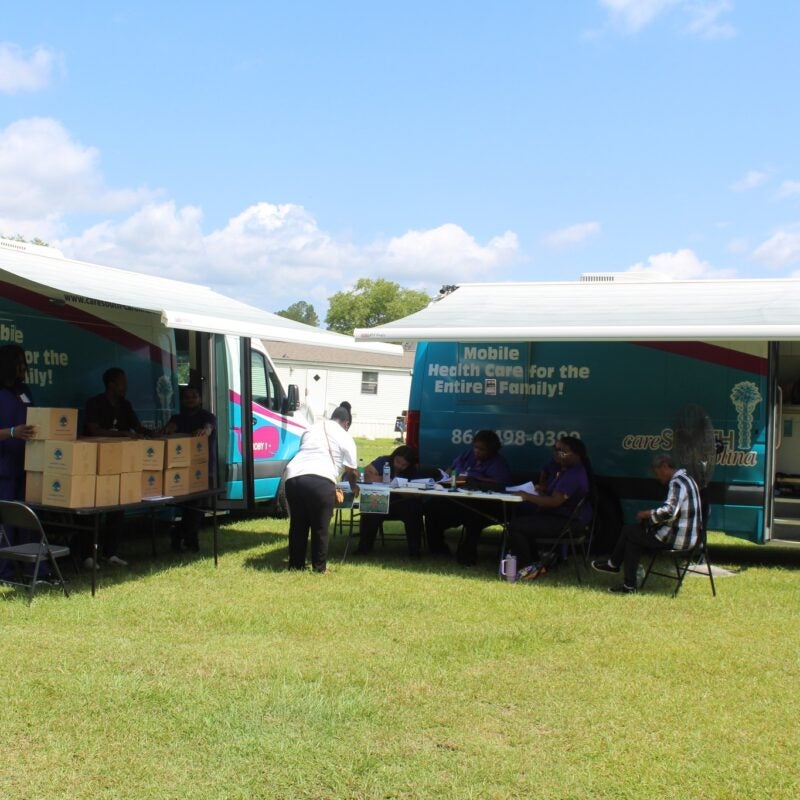
Harvest Hope Food Bank partners with CareSouth Carolina to distribute rural non-congregate meals in Society Hill, South Carolina.
Harvest Hope handled the logistics, including menu planning, procurement, packing, and federal reporting, so partners could focus on engaging their local communities and serving the meals
“We are basically like a distribution hub,” Rowe explained. “We do all of the heavy lifting. Our partners just distribute the food to the kids.”
Perhaps the most powerful part of this program is its replicability. Harvest Hope didn’t build something new from the ground up. Instead, they optimized their existing operations and partnerships to serve children more effectively.
If you’re another food bank thinking about serving non-congregate meals, Harvest Hope has great advice. “Start small, plan carefully, and know your budget,” Rowe stated.
Other food banks can even partner with Harvest Hope as a vendor to receive pre-packed kits if they’re not ready to build their own program from scratch. “We have these kits available. If your organization isn’t a part of our agency, you can purchase these kits from us to distribute to families in your area or other partners – we can be a (summer meal) vendor as well.”
As summer 2025 continues, Harvest Hope is prepared to grow the program even further, adding new sites, reaching more children, and continuing to refine the process.
“We’re proud to serve nutritious meals to communities that are often overlooked,” Rowe said. “We got our ducks in a row, so we’re looking forward to it.”
For food banks nationwide, the message is clear: the infrastructure to feed more kids is already in place.
Join us in supporting organizations like Harvest Hope Food Bank that are ending childhood hunger in rural communities across the country.
Read our recent case study that explores Harvest Hope’s unique program model to expand summer food access.
You can visit Harvest Hope’s website at https://www.harvesthope.org/.


